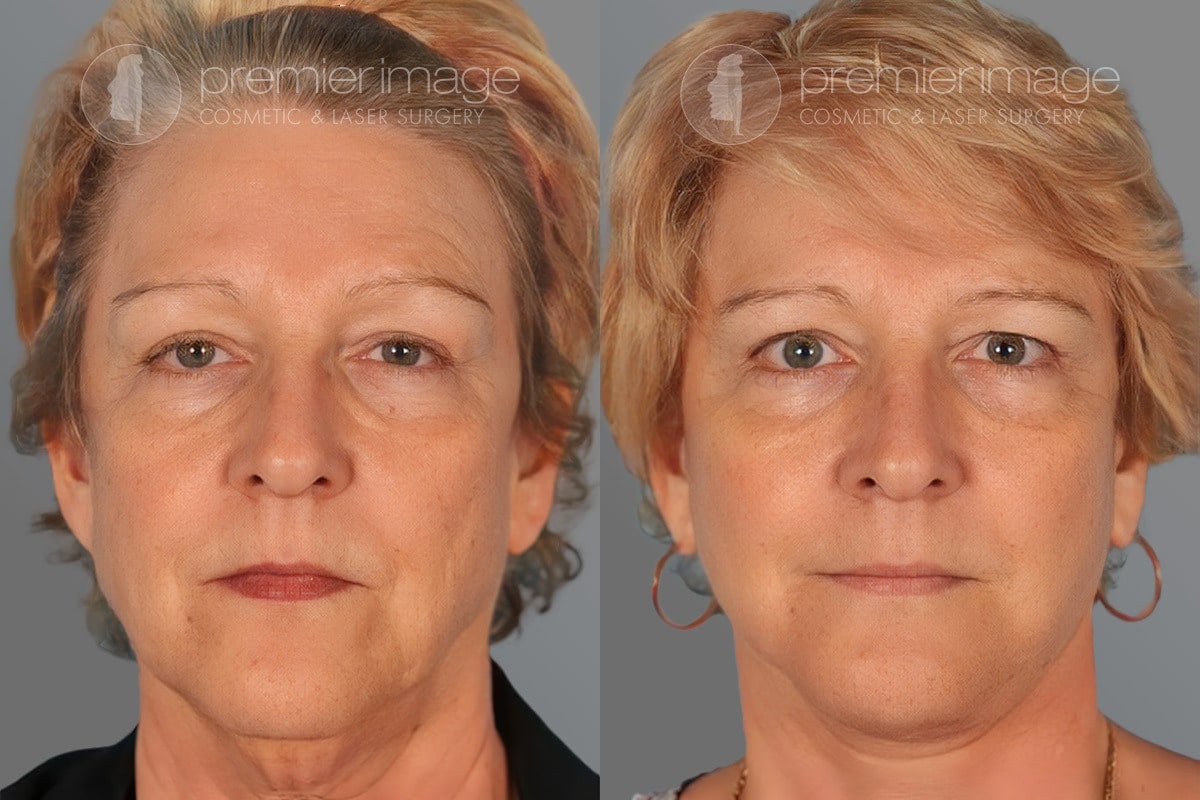Have you ever wanted to know what the recovery is like from neck lift surgery? There are many cosmetic surgery options and this one can help refresh your look. Yet, the important thing is knowing what to expect after the procedure and how to aid in a quick recovery. This post-surgery care and recovery guide is what you need to know about the different aspects of this journey toward looking younger than ever before.

Successful and Smooth Neck Lift Surgery Recovery
- Neck lift recovery progresses in a timeline and the initial reduction in swelling occurs within 1 to 2 weeks with complete healing taking place over three months up to six.
- It is crucial to manage swelling through head elevation, cold compresses, and avoiding any exposure to heat that can delay healing.
- Recovery involves many lifestyle changes like discontinuing smoking, alcohol, and other strenuous activities to avoid complications.
- After neck lift surgery, tightness and some scarring are normal; these will improve with time as proper care is taken at follow-up visits supported by healing strategies directed by your surgeon.
- Making note of warning signs that include severe swelling, pain or the occurrence of infection is paramount to deal with potential complications early and have a successful recovery.
Understanding Neck Lift Surgery
The procedure removes sagging skin and reduces wrinkles producing a tighter neck. So for this type of plastic surgery, the biggest advantage will be a more specific goal in terms of tightening up neck and jawline contour lines to your body.
This means the surgeon removes the extra skin and fat and then tightens your muscles underneath. Which can be dictated by the specific needs of an individual patient and may include anywhere from minimally invasive to more extensive surgeries.
Timeline for Neck Lift Surgery Recovery
Neck lift recovery varies from patient to patient, depending on a number of factors such as overall health and the extent of the procedure overview. Over the upcoming weeks, you will gradually see the results.
Day 1-3: The state of most swollen and/or bruised skin. May require painkillers.
Day 4-7: Bruising fades. Stitches may be removed if non-dissolvable.
Week 2: Swelling comes down. Non-strenuous work may be possible.
Week 3-4: Return to most normal activities. Large visible signs of surgery are greatly reduced.
Month 1-2: Final shape becomes apparent. Residual swelling fades.
Month 3-6: Patients are usually fully healed. Scar maturation begins.
Managing The Swelling
Swelling is normal as your body heals, but excessive inflammation can mean an infection. A surgeon will provide instructions on how to monitor the swelling closely.
- Keep your head elevated to the level of your heart, especially when sleeping to reduce swelling.
- Apply ice packs to the neck area for at least the first 48 hours post-surgery
- Follow post-surgery instructions for compression garments as prescribed by your plastic surgeon
- Avoid exposure to heat. It will make swelling worse.
Taking Medication
It is very important to follow the directions of any prescribed medications after neck lift surgery. Some of the medications, which have been purposefully designed for this use, will help control pain and inflammation allowing a quicker recovery. But, be careful of self-medication with over-the-counter medications as it may play badly together the prescription drugs. Never take extra pain meds without discussing it with your surgeon or pharmacist.
Dietary Adjustments
When it comes to neck lift surgery recovery, what you eat and drink can make a big difference. Nutrition and hydration could make this wound less likely to infect, as well as reduce the swelling.
- Staying well-hydrated helps with the swelling.
- Choose a balanced diet rich in vitamins and minerals
- To avoid fluid retention, be cautious about the amount of salt you ingest.
Lifestyle changes
By following the instructions properly and incorporating certain lifestyle changes, you can return to your daily routine pretty soon. These changes are steps towards the perfect healing environment.
- Smoking can make the healing more complex.
- Stay away from alcohol, as it causes inflammation.
- Don’t hold a hot shower or take steamy baths as this can actually increase blood flow.
- Do not expose the surgical area to the sun as it can make the bruising worse

Secure Your Safe Procedure Experience with Dr. Louis DeJoseph
Join our satisfied clients who’ve experienced safe, effective treatments.
Activity Modification
You have to change your daily routine. It reduces stress in the surgical area to avoid complications:
- Avoid intense workouts and heavy lifting as it can increase more blood flow across the surgical area.
- Avoid facial expressions that tensely contract neck muscles.
Dealing with Tightness
A common sensation after neck lift surgery is a feeling of tightness in the neck. These feelings are typical; your body is adjusting to its new contours. While returning to strenuous activities and physical activity, you should take it slowly. Gradually increase the intensity of your regular activities to avoid straining your neck. You may notice a lessening of the feeling of tightness and potentially a reduction in your chin as healing progresses. Be patient and gentle with yourself during this healing period.
Going to Follow-up appointments
It is important to follow the surgeon’s instructions for post-operative visits, as this will help ensure your neck recovery progresses smoothly. You may be instructed to visit the surgeon every two or three days for the first week, then every four to six days. If there are no signs of swelling or drainage, you can then progress to every seven to 10 days. After four weeks, you can then visit the cosmetic surgeon as needed.
Taking your Time
Adequate rest is essential for a smooth recovery after a neck lift in Atlanta. To ensure comfortable healing, consider these key points:
- Maintain a positive attitude, as staying optimistic and patient significantly aids in recovery.
- Wear loose clothing, especially button-down shirts, which are easier to manage and reduce strain on the neck.
- Keep entertainment ready, such as books, movies, or music, to stay relaxed and occupied while resting.
- Use extra pillows to elevate your head, aiding in comfort and reducing swelling.
- Focus on creating a restful environment for comfortable healing.
- Avoid excessive neck movements to prevent strain and ensure proper healing.
Scarring and Healing
The neck lift procedure may leave scars, but a skilled surgeon ensures they’re discreet. It’s vital to follow the surgeon’s care instructions for your neck muscles during the healing process. This aids in reducing scarring and promotes holistic recovery. Patience is key, as complete healing may take a considerable amount of time.
Longevity of the Surgery Results
The longevity of the results can vary, largely determined by individual factors like general health, blood circulation, and lifestyle habits. The effects of this surgical procedure typically remain for 10-15 years after the initial consultation, with the neck appearing significantly younger and the lifting of loose skin accomplished. However, results could diminish if excessive weight fluctuation occurs, excessive sun exposure is faced, or poor health habits are followed. Consistent proper neck care can help in maintaining these effects.
Before and After Photos


* Each patient is unique and individual results may vary.
Warning Signs During Your Recovery
During your neck lift recovery journey, it’s crucial to be aware of certain warning signs that may indicate complications. If you experience any of the following, contact your surgeon or seek medical attention immediately:
- Increased Swelling or Bruising: While some swelling and bruising are normal, a sudden increase or swelling that doesn’t subside can be a concern.
- Excessive Pain: Some discomfort is expected, but severe or increasing pain may suggest complications.
- Signs of Infection: Redness, warmth, worsening swelling, or discharge from the incisions could indicate an infection. A fever higher than 101°F (38°C) can be a sign too.
- Unusual Skin Changes: Any unexpected changes in the neck skin color or necrosis (skin death) need immediate attention.
- Breathing or Swallowing Difficulties: Any trouble breathing or swallowing is a serious concern and requires immediate medical intervention.
- Asymmetry or Irregular Contours: Significant asymmetry or irregularities in the contour of your neck might indicate underlying issues.
- Persistent Numbness or Tingling: While some numbness is normal, prolonged or severe numbness could be a sign of nerve damage.
- Excessive Bleeding: Some drainage is normal, but excessive or continuous bleeding is a red flag.
Consult with a Facial Plastic Surgery Expert
To achieve the best results from your neck lift, expert guidance is key. Dr. Louis DeJoseph specializes in facial cosmetic procedures, ensuring a seamless experience from start to finish. For personalized post-operative care instructions and professional advice, schedule a consultation with Dr. DeJoseph and take the first step toward your desired outcome.
Understanding Neck Lift Surgery
A neck lift is an outpatient procedure aimed at tightening sagging skin and reducing wrinkles around the neck, delivering a more youthful appearance. The key advantage of this type of plastic surgery is its targeted focus on defining the neck and jawline, leading to a more pleasing contour of the body.
The procedure involves removing excess skin and fat while tightening the underlying muscles. It varies based on the individual patient’s needs and can range from less invasive to more comprehensive surgeries.